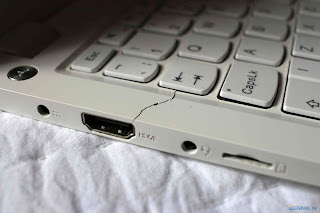Intel hopes to extend laptop battery life with Ice Lake
At CES
2019 and its Architecture Day back in December, Intel made it clear that its
overall goal with its 10nm designs is to push CPUs and platform designs beyond
the levels we’ve seen with 14nm chips. Sunny Cove, the new CPU architecture at
the heart of Ice Lake, is one component of that shift. The new CPU architecture
can accelerate certain cryptographic operations by up to 75 percent, with
support for Intel’s VNNI (Vector Neural Network Instructions).
Intel's
overall focus is that the initial push for Ice Lake in consumer hardware will
be mobile priority, echoing the company's approach to adopting Broadwell in
2014. Although Ice Lake will support LPDDR4X memory as a way to improve RAM
bandwidth, it is unclear whether Intel will support the highest speed grade
LPDDR4X-4266. Although the RAM in these systems cannot be upgraded, the fact
that such a large bandwidth makes Intel's IGP significantly more than any AMD
equivalent APU bandwidth, especially in mobile devices.
As part
of its architecture day, Intel discussed some of these improvements. The
company hopes to see 1W displays on the market by 2020, which will show a
significant reduction in the average display power of current models.
The company is taking other steps to improve overall energy efficiency,
including plans to offload AV zoom to the GPU (as discussed earlier) and
integrated WiFi 6 and Thunderbolt 3 support. To be sure, upgrading these
features to SoCs may increase overall efficiency because most I/O modules can
benefit from this type of integration.
How many
improvements can customers expect?
The
problem predicted by Intel is that how much of this work is impossible for the
company to complete. Few indicators are more likely to be improved than battery
life, precisely because the degree of optimization performed by the
manufacturer and the components selected can have such a huge impact on the
final system.
UEFI and
driver optimization are important. Display panel selection, skin temperature
target and power consumption target are all aspects of OEM controlled
equipment. We have begun to see an increase between persistence and burst
performance, which means we need to adjust laptop tests to explain them.
Overall, this gives manufacturers great flexibility to build differentiated
products for a variety of features and functions. However, in practice,
companies often have difficulty distinguishing which systems deploy which improvements,
or use any power savings to increase power consumption in other aspects of the
system. Higher resolution displays will cost more
Consumers
want a battery life of 25 hours. Consumers also need high resolution, excellent
CPU and GPU performance, the lightest thickness, small bezel, upgradeable parts
and affordable price. The latest Ice Lake mixes them together, Intel's 10nm
process, display
technology improvements and architectural efficiency improvements to provide battery
life.


评论
发表评论